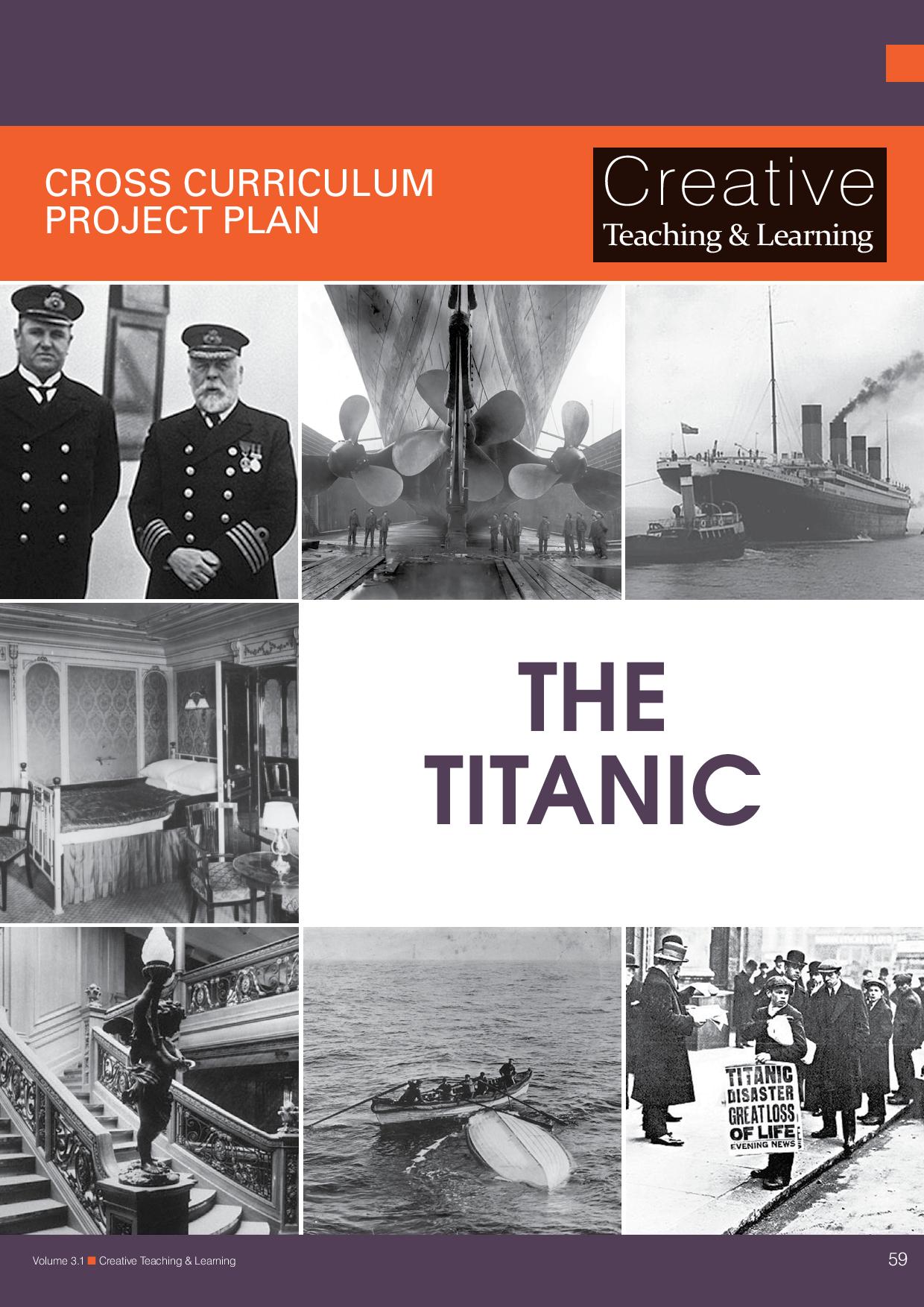On 15 April 1912 at 2:20 am, RMS Titanic disappeared beneath the waves of the Atlantic Ocean, taking 1517 lives with it. The sinking of this famous ship is a legend that naturally engages children and maintains its relevance today.
Titanic was a legend before she even sailed on her maiden voyage. She was built as a dream – the largest passenger ship in the world at the time, and, ironically, the safest. She was special, she was unsinkable, and under this illusion, carried just 20 lifeboats. The largest ship to sink on her maiden voyage, the Titanic disaster resulted in an enormous loss of life. Some of the wealthiest people in the world at the time perished in the sinking.
The activities presented here in this project plan are targeted at children in Key Stage 2 and lower Key Stage 3. It is a cross curricular topic with a great emphasis on thinking skills. The topic aims to engage the children as readers with purpose, enabling them to connect their new learning to current understanding.
Project Overview
The Titanic text
Why did RMS Titanic, ship of dreams, sink? This text explores the events that fateful night and why the Titanic became the most famous shipwreck of all time. Available as a pdf (found in ‘Project Plan: The Titanic’) and as a separate word document (formatted to make mass printing/photocopying easier and more cost effective).
Activity 1: Activating prior knowledge
Activity 2: Anticipation guide
Activity 3: Powerful verbs and adjectives (formerly ‘Mind map’)
Activity 4: Reading the text
Activity 5: Read all about it!
Activity 6: Titanic facts and figures
Activity 7: What shape boat floats the best?
Activity 8: Poetry writing
Activity 9: How much of an iceberg can be seen above the waterline?
Activity 10: Should the wreckage of the Titanic be left alone? (formerly ‘Agree/disagree line or Decision alley’)
Activity 11: Producing a culturegram
Activity 12: Titanic role-play
Activity 13: Splat!
Activity 14: Taboo
Activity 15: Safety procedures and survival
The resource packs that accompany each activity include detailed instructions, worksheets, information factsheets, research resources, images and more.




